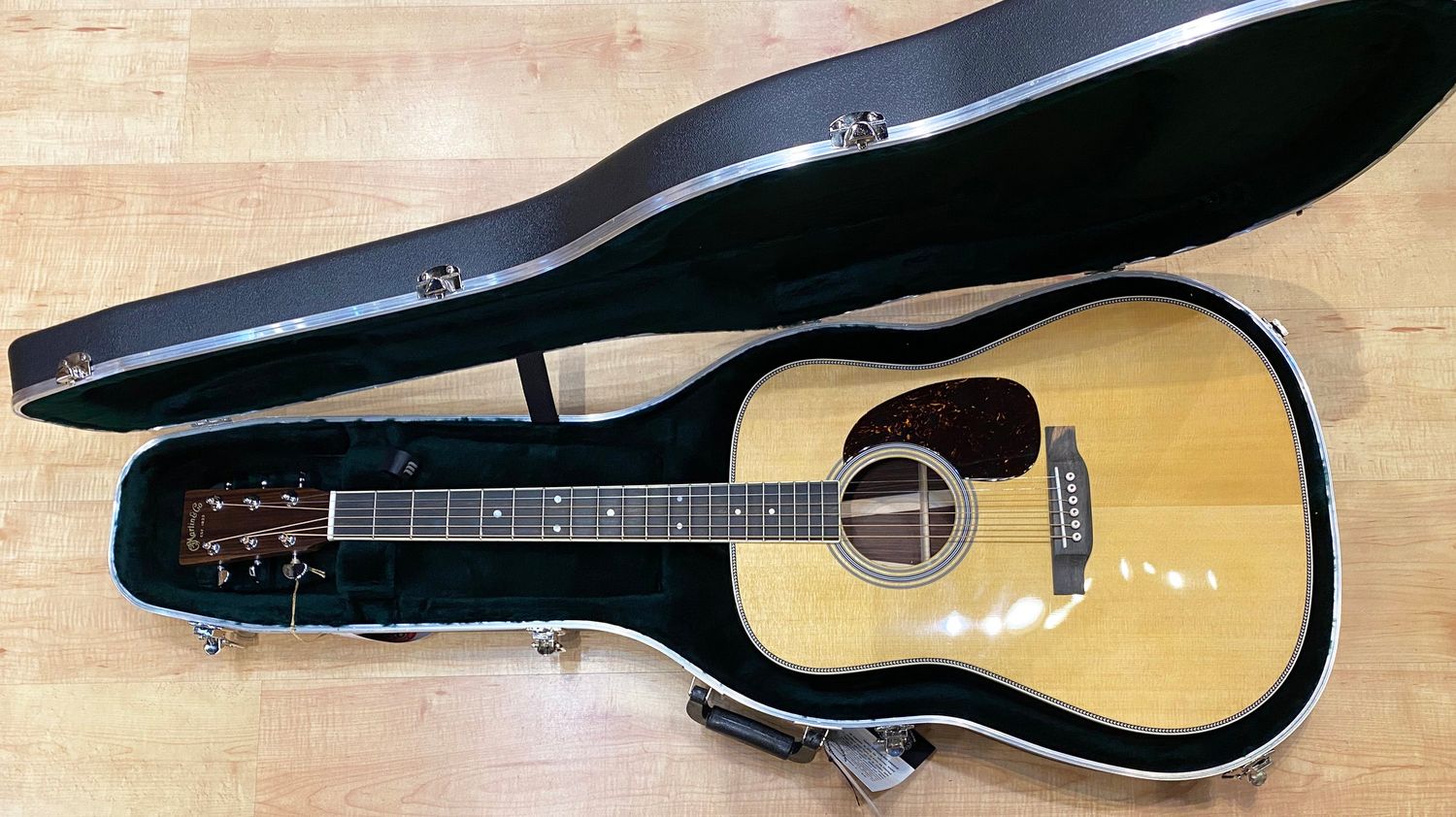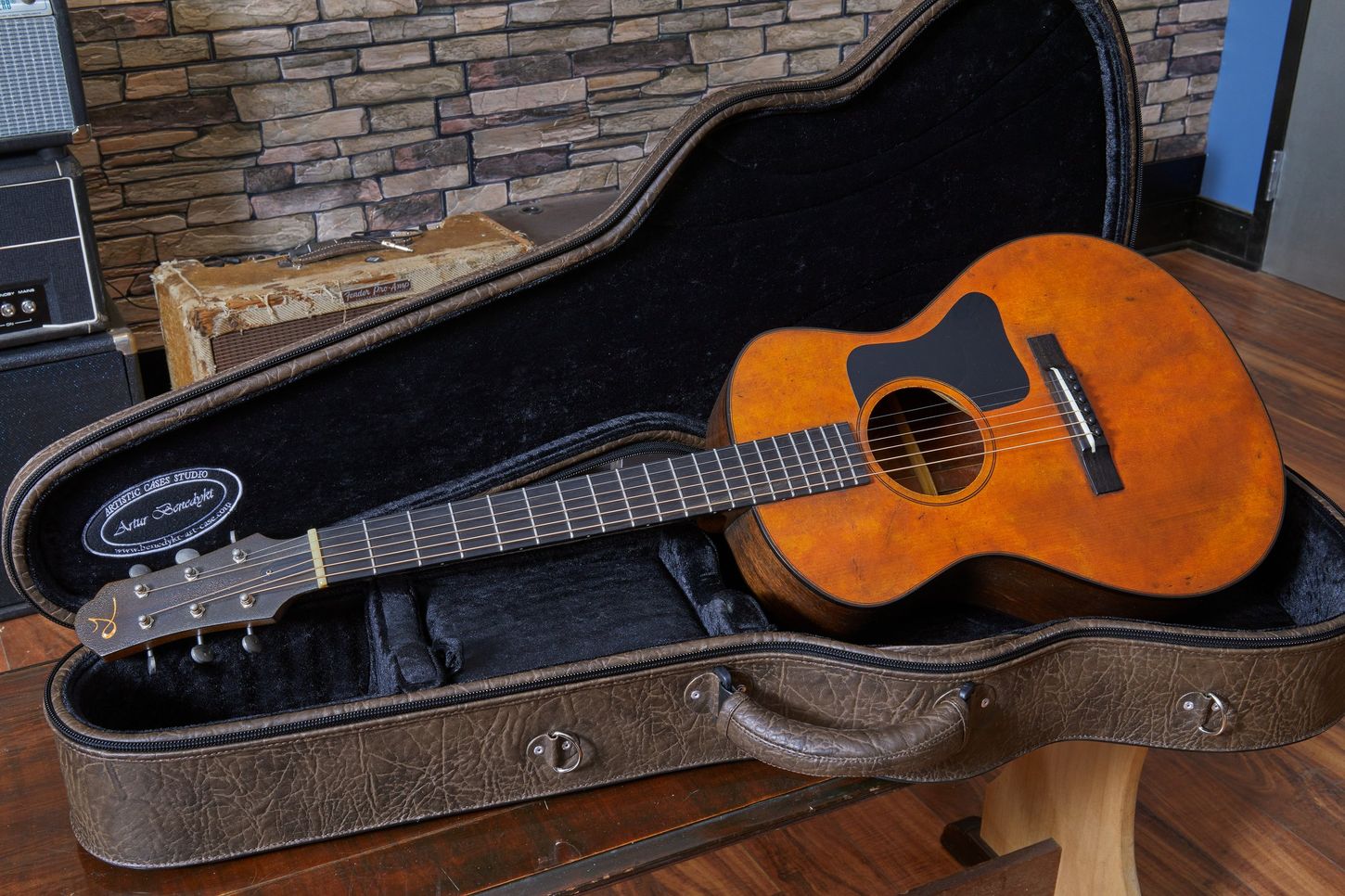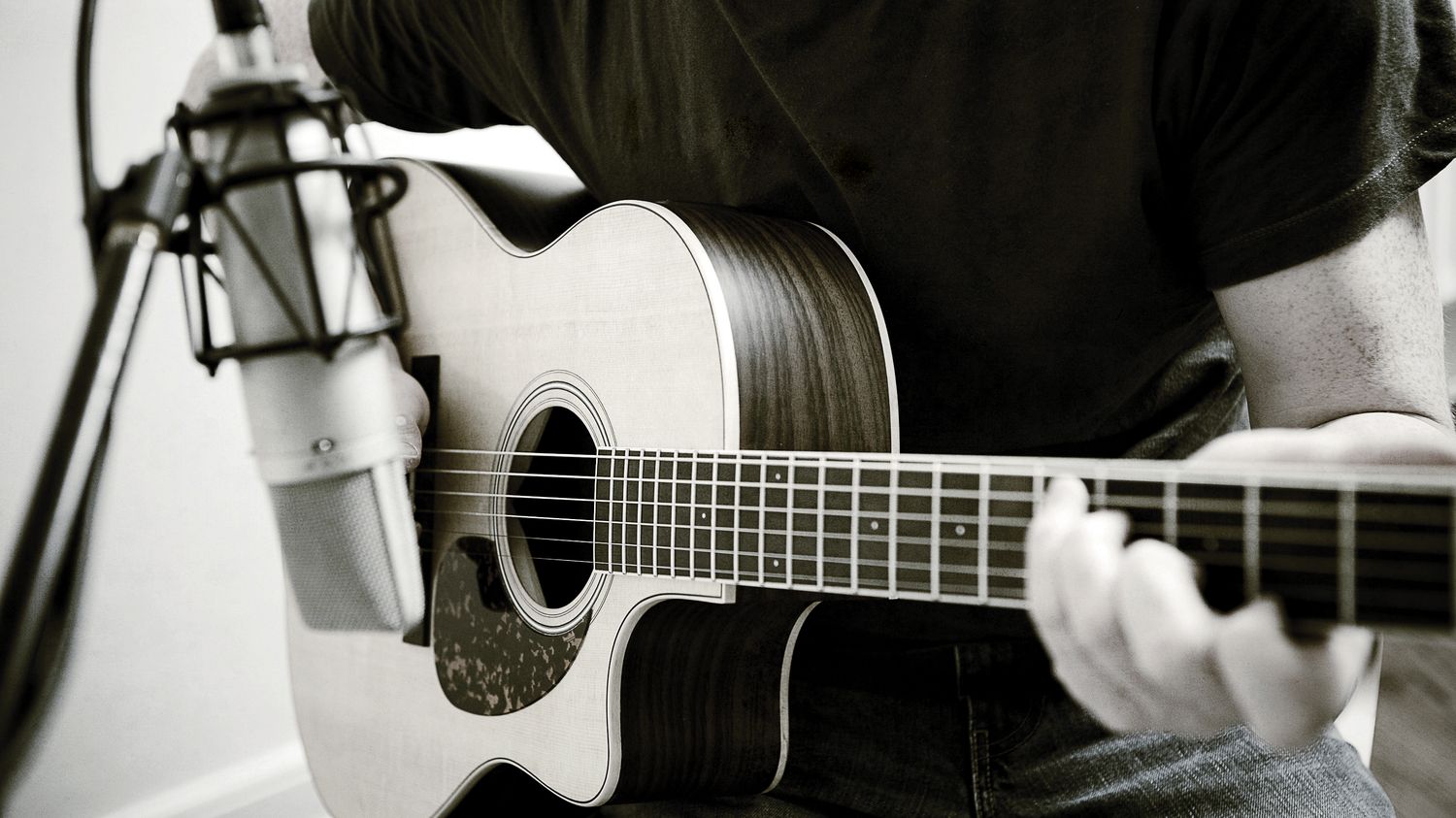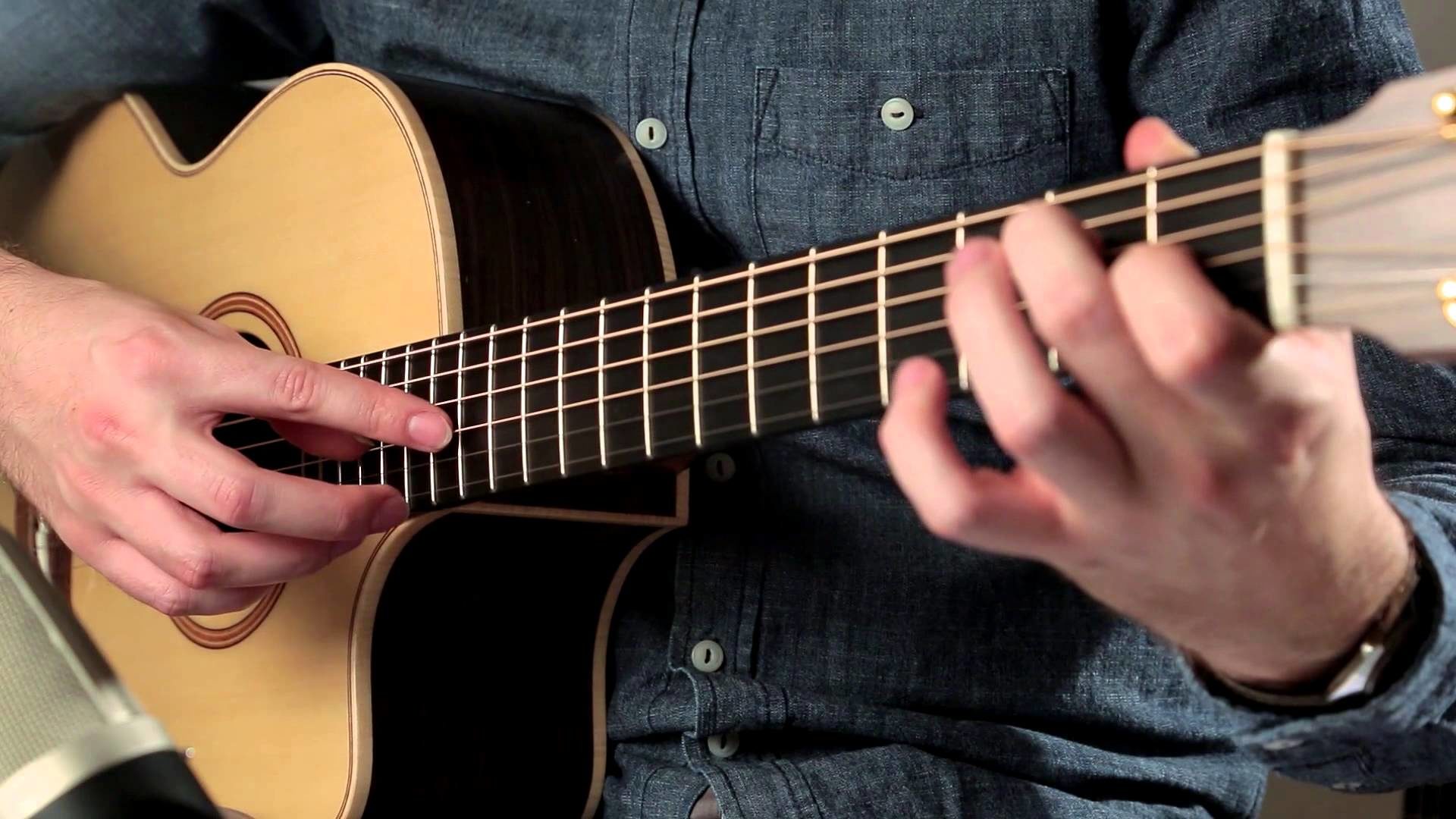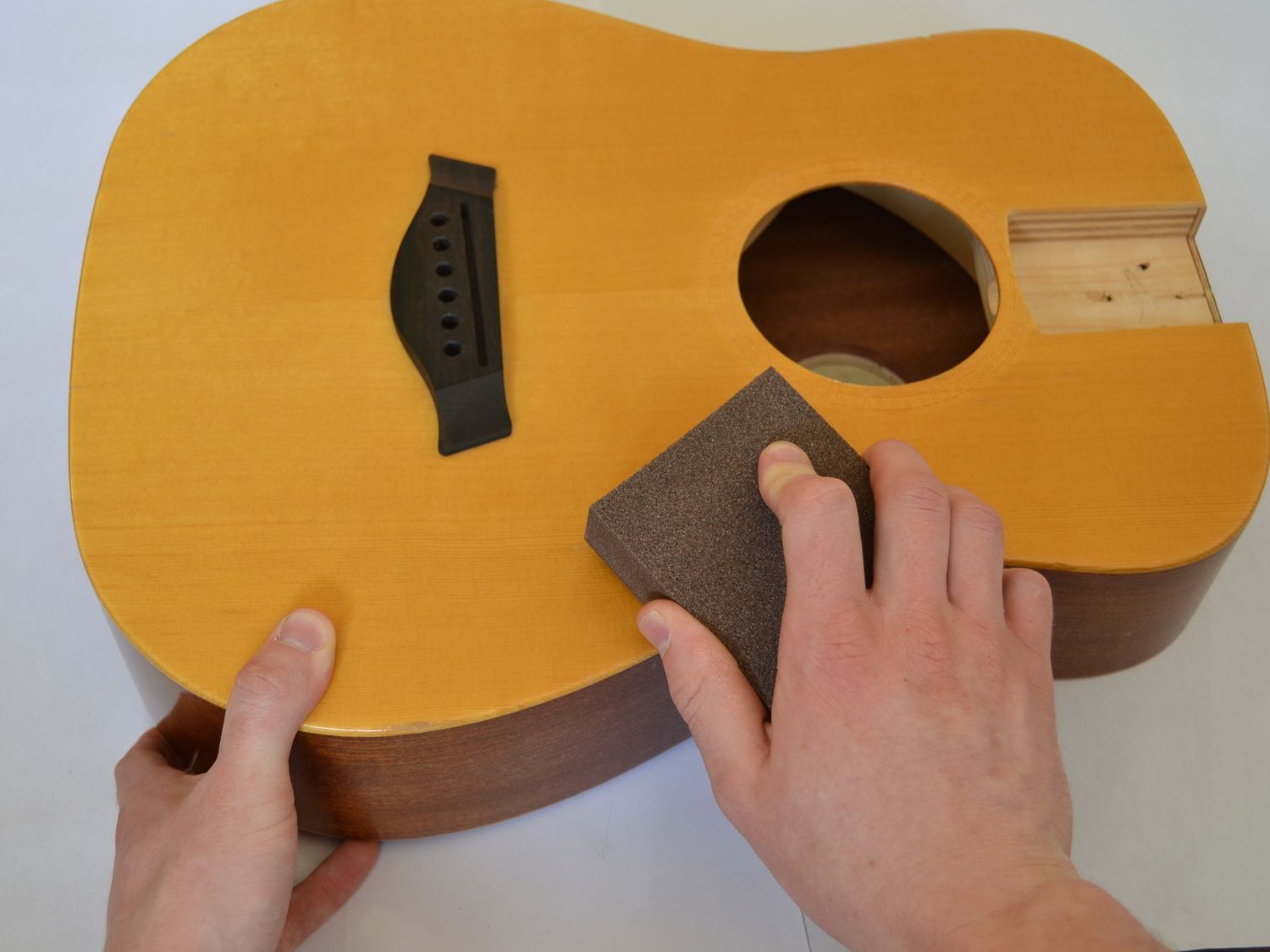Home>Production & Technology>Acoustic>How To Choose A Good Acoustic Guitar


Acoustic
How To Choose A Good Acoustic Guitar
Published: March 12, 2024
Learn how to choose the perfect acoustic guitar with our expert tips and recommendations. Find the best acoustic guitar for your needs today!
(Many of the links in this article redirect to a specific reviewed product. Your purchase of these products through affiliate links helps to generate commission for AudioLover.com, at no extra cost. Learn more)
Table of Contents
Introduction
Choosing a good acoustic guitar is a thrilling and rewarding experience, whether you're a beginner embarking on your musical journey or a seasoned player seeking to expand your collection. The right acoustic guitar can inspire creativity, elevate your playing, and become a cherished companion on your musical endeavors. However, with the myriad of options available, selecting the perfect acoustic guitar can be a daunting task. Fear not, as this comprehensive guide will equip you with the knowledge and insights necessary to make an informed decision.
An acoustic guitar is more than just a musical instrument; it's an extension of your artistic expression and a conduit for emotive storytelling. Whether you're drawn to the warm resonance of a dreadnought, the intimate charm of a parlor guitar, or the versatility of a grand auditorium, the acoustic guitar's allure is undeniable. Each strum and pluck resonates with history, culture, and the timeless appeal of acoustic music.
In this guide, we will delve into the essential factors to consider when choosing an acoustic guitar. From understanding the impact of tonewoods on sound to evaluating the playability and comfort of different models, we will navigate the intricate world of acoustic guitars. Whether you aspire to serenade intimate gatherings, captivate audiences on stage, or simply lose yourself in the joy of playing, the right acoustic guitar is pivotal to your musical odyssey.
Embarking on the quest for the perfect acoustic guitar is an adventure that transcends mere shopping; it's a journey of self-discovery and sonic exploration. As we embark on this journey together, let's unravel the nuances of acoustic guitars and empower you to make a choice that resonates with your musical aspirations. So, grab your metaphorical compass, and let's navigate the enchanting realm of acoustic guitars to find the one that harmonizes with your soul.
Consider Your Budget
When embarking on the quest for the perfect acoustic guitar, one of the initial and crucial considerations is your budget. Your budget serves as the compass that guides you through the vast sea of acoustic guitar options, ensuring that you set sail in the right direction. Whether you're a budget-conscious beginner or a seasoned player with a flexible spending capacity, understanding the correlation between your budget and the available options is paramount.
For those venturing into the realm of acoustic guitars for the first time, it's essential to establish a realistic budget that aligns with your commitment to learning and playing. Entry-level acoustic guitars are available at various price points, catering to beginners with modest budgets. These guitars offer decent playability, sound quality, and craftsmanship, providing a solid foundation for honing your skills without breaking the bank.
As you ascend the budget ladder, a broader spectrum of acoustic guitars unveils itself, showcasing enhanced tonal characteristics, superior build quality, and refined aesthetics. Mid-range acoustic guitars present an enticing array of options, striking a balance between affordability and performance. These guitars often feature premium tonewoods, meticulous craftsmanship, and versatile electronics, catering to intermediate players seeking to elevate their musical prowess.
For the discerning connoisseur or professional musician, the higher echelons of the acoustic guitar market offer an opulent array of instruments that embody unparalleled craftsmanship, exquisite tonal nuances, and timeless elegance. While the investment in a high-end acoustic guitar is substantial, the rewards are equally substantial, with instruments that resonate with unparalleled sonic richness and aesthetic allure.
Understanding your budget not only narrows down the plethora of options but also enables you to make an informed decision based on your financial comfort zone. It's crucial to strike a balance between your budget and the features that matter most to you, whether it's tonal characteristics, playability, aesthetics, or a combination of these factors. By aligning your budget with your musical aspirations, you can embark on your acoustic guitar journey with confidence, knowing that you've made a well-informed decision that harmonizes with your financial parameters.
In essence, considering your budget is the foundational step in the quest for the perfect acoustic guitar. It empowers you to explore the available options within your financial scope, ensuring that you embark on your musical odyssey with a clear understanding of the investment you're willing to make. Whether you're drawn to the understated charm of an entry-level acoustic guitar or the exquisite craftsmanship of a high-end instrument, your budget serves as the compass that steers you toward the acoustic guitar that resonates with your musical aspirations.
Determine Your Playing Style
Understanding your playing style is pivotal in the quest for the perfect acoustic guitar. Your playing style encompasses the techniques, genres, and musical expressions that resonate with your artistic identity. Whether you're drawn to fingerstyle folk melodies, strumming vibrant chords in a lively ensemble, or exploring the intricate realms of percussive acoustic techniques, your playing style shapes the sonic characteristics and ergonomic requirements of the ideal acoustic guitar.
For fingerstyle aficionados, the tonal clarity, responsiveness, and dynamic range of an acoustic guitar are paramount. Instruments with a wider nut width and a more spacious string spacing facilitate intricate fingerpicking patterns, allowing the nuances of each note to resonate with crystalline clarity. Additionally, a guitar with a balanced tonal spectrum, accentuating the richness of the bass notes while maintaining the shimmering clarity of the trebles, harmonizes with the intricate tapestries woven through fingerstyle compositions.
Conversely, for strumming enthusiasts, the acoustic guitar's projection, resonance, and tonal warmth take precedence. A guitar with a robust midrange presence and a responsive top end can elevate strummed chords, infusing them with vibrant harmonics and a captivating sonic presence. Furthermore, the body shape and size of the guitar play a pivotal role in delivering the desired sonic impact, with larger-bodied guitars offering enhanced volume and resonance, ideal for commanding a room with spirited strumming.
For those venturing into percussive acoustic techniques, such as body percussion and tapping, the acoustic guitar's build quality, durability, and tonal versatility are paramount. Instruments crafted with solid tonewoods and meticulous bracing designs offer the resilience and tonal depth necessary to withstand the percussive onslaught while delivering a diverse sonic palette that complements the rhythmic intricacies of percussive playing.
Understanding your playing style empowers you to discern the acoustic guitar characteristics that align with your musical expressions. Whether it's the tonal nuances, ergonomic considerations, or sonic projection, your playing style serves as the compass that guides you toward the acoustic guitar that resonates with your artistic identity. By embracing the intricacies of your playing style, you embark on a journey to discover the acoustic guitar that harmonizes with your musical aspirations, elevating your playing to new heights of sonic expression.
Body Shape and Size
The body shape and size of an acoustic guitar play a pivotal role in defining its sonic characteristics, ergonomic comfort, and visual allure. Each body shape offers a distinct sonic footprint, resonant properties, and ergonomic nuances, catering to diverse playing styles and tonal preferences.
Dreadnought guitars, characterized by their bold presence and robust projection, are revered for their balanced tonal spectrum, making them a popular choice for strummers and flatpickers. The expansive lower bout and broad shoulders of a dreadnought guitar contribute to its commanding volume and pronounced bass response, ideal for commanding a room with spirited strumming or ensemble playing. Additionally, the dreadnought's generous soundboard area facilitates a broad dynamic range, accommodating both delicate fingerpicking and vigorous strumming with equal finesse.
Conversely, concert and grand concert guitars offer a more compact and ergonomic profile, making them well-suited for fingerstyle players and those seeking a more intimate playing experience. The concert body shape strikes a balance between articulation and warmth, with a focused midrange and a pronounced clarity across the tonal spectrum. This makes it an ideal choice for solo performers and ensemble settings where tonal precision and individual note articulation are paramount.
Parlor guitars, with their diminutive size and vintage charm, evoke a bygone era of intimate musical gatherings and heartfelt serenades. Despite their modest dimensions, parlor guitars exude a distinctive tonal character, characterized by a balanced tonal response and a charmingly intimate projection. Their compact size and lightweight nature make them an inviting option for musicians seeking a portable and expressive companion for musical endeavors on the go.
Beyond the body shape, the depth and contours of an acoustic guitar's body contribute to its ergonomic comfort and resonance. Thinner-bodied guitars offer a more intimate playing experience and are favored for their feedback resistance when amplified, making them suitable for stage performances. On the other hand, larger-bodied guitars, such as jumbos and grand auditoriums, offer enhanced volume, resonance, and low-end presence, making them ideal for genres that demand a commanding sonic presence, such as bluegrass and roots music.
In essence, the body shape and size of an acoustic guitar are pivotal considerations that influence its sonic characteristics and ergonomic suitability. By understanding the sonic nuances and ergonomic implications of different body shapes and sizes, you can embark on your quest for the perfect acoustic guitar with a discerning eye, ensuring that the instrument you choose harmonizes with your musical aspirations and playing style.
Tonewoods
The selection of tonewoods profoundly influences the sonic character, resonance, and tonal nuances of an acoustic guitar. Each tonewood possesses distinctive acoustic properties, contributing to the instrument's sonic footprint and tonal complexity. From the resonant warmth of mahogany to the sparkling articulation of spruce, the choice of tonewoods is a pivotal consideration in the quest for the perfect acoustic guitar.
Spruce, renowned for its versatility and tonal clarity, is a favored choice for the soundboard of acoustic guitars. Its exceptional strength-to-weight ratio and pronounced stiffness imbue the guitar with a vibrant top end, articulate note definition, and a broad dynamic range. Sitka spruce, in particular, is prized for its balanced tonal spectrum, making it a popular choice for a wide range of playing styles and musical genres.
Mahogany, revered for its warm, midrange-focused tonal character, is often employed in the construction of the back and sides of acoustic guitars. Its pronounced midrange presence and rich harmonic overtones infuse the guitar with a resonant warmth, making it an ideal tonewood for blues, folk, and roots music. Additionally, mahogany's inherent sustain and tonal depth contribute to the guitar's sonic allure, creating a captivating sonic canvas for expressive playing.
Rosewood, celebrated for its lush tonal complexity and pronounced low-end response, is a coveted tonewood for the back and sides of acoustic guitars. Its deep, resonant bass response, coupled with shimmering trebles and a pronounced midrange bloom, bestows the guitar with a luxurious sonic palette. The tonal depth and harmonic richness of rosewood make it an ideal choice for players seeking a lush, orchestral tonal character and a captivating sonic presence.
Furthermore, the choice of tonewoods extends to the neck and fretboard, influencing the guitar's playability and tonal resonance. Maple, known for its bright tonal character and resilient stability, is often employed in the construction of guitar necks, offering a snappy response and enhanced articulation. Ebony, prized for its smooth texture and sonic clarity, is a favored choice for fretboards, providing a tactile playing surface and a pronounced note definition.
In essence, the selection of tonewoods is a defining factor in shaping the sonic identity and tonal nuances of an acoustic guitar. By understanding the acoustic properties and tonal characteristics of different tonewoods, you can embark on your quest for the perfect acoustic guitar with a discerning ear, ensuring that the instrument you choose resonates with your musical aspirations and tonal preferences.
Neck and Fretboard
The neck and fretboard of an acoustic guitar play a pivotal role in shaping the instrument's playability, comfort, and tonal resonance. As the tactile interface between the musician and the instrument, the neck and fretboard influence the overall feel and responsiveness of the guitar, making them essential considerations in the quest for the perfect acoustic guitar.
The profile and dimensions of the neck significantly impact the player's comfort and ease of navigation across the fretboard. Neck profiles vary from slim and fast-playing designs to more substantial, rounded profiles, catering to diverse playing styles and ergonomic preferences. A slim neck profile facilitates swift chord transitions and intricate lead passages, ideal for players seeking a nimble and agile playing experience. Conversely, a fuller neck profile offers a substantial grip and ergonomic support, catering to players who prefer a more substantial feel and enhanced resonance transfer from the neck to the body of the guitar.
Furthermore, the width and contour of the neck directly influence the spacing between the strings, known as the string spacing or string "spread." A wider string spacing accommodates fingerstyle players and those with larger hands, providing ample room for intricate fingerpicking patterns and chord voicings. Conversely, a narrower string spacing offers a more compact and streamlined feel, ideal for players with smaller hands or those seeking a more intimate playing experience.
The fretboard material also contributes to the guitar's playability and tonal characteristics. Rosewood, known for its smooth texture and lush tonal complexity, is a favored choice for fretboards, offering a tactile playing surface and a rich, resonant tonal character. Ebony, prized for its sleek appearance and pronounced note definition, is revered for its sonic clarity and responsive feel, making it an ideal choice for players seeking articulate note articulation and a sleek aesthetic.
In addition to the fretboard material, the fret size and fretboard radius significantly impact the guitar's playability and intonation. Medium-sized frets offer a balance between fretting precision and comfortable playability, catering to a wide range of playing styles and techniques. Furthermore, a flatter fretboard radius facilitates low action and smooth string bending, enhancing the guitar's playability and ergonomic comfort, particularly for lead guitarists and solo performers.
In essence, the neck and fretboard of an acoustic guitar are integral components that define the instrument's playability, comfort, and tonal resonance. By understanding the nuances of neck profiles, string spacing, fretboard materials, and fret specifications, you can embark on your quest for the perfect acoustic guitar with a discerning eye, ensuring that the instrument you choose harmonizes with your playing style and ergonomic preferences.
Hardware and Electronics
The hardware and electronics of an acoustic guitar encompass a diverse array of components that significantly influence its performance, tonal versatility, and amplification capabilities. From the precision-engineered tuning machines to the sophisticated onboard electronics, each element plays a pivotal role in shaping the sonic identity and functional adaptability of the instrument.
Tuning machines, also known as tuners or tuning pegs, are integral components that directly impact the guitar's tuning stability and precision. High-quality tuning machines facilitate smooth and accurate tuning adjustments, ensuring that the guitar remains in tune during extended playing sessions and performance settings. Additionally, the gear ratio of the tuning machines influences the ease of tuning, with higher gear ratios offering finer tuning control and stability, particularly beneficial for intricate fingerstyle playing and alternate tunings.
The choice of bridge and saddle materials significantly impacts the guitar's tonal characteristics and sustain. A well-crafted bridge and saddle contribute to the guitar's resonance, string intonation, and overall tonal balance. Materials such as bone and synthetic bone are favored for their tonal clarity and efficient transfer of string vibrations, enhancing the guitar's sustain and harmonic richness.
When it comes to amplifying the acoustic guitar's natural sound, onboard electronics play a pivotal role in capturing and reproducing its tonal nuances with precision and clarity. Acoustic guitars equipped with built-in pickup systems and preamps offer the versatility to amplify the instrument in live performance settings and studio recordings. The quality of the pickup system, whether it's a piezo transducer, internal microphone, or magnetic pickup, influences the guitar's amplified tonal character and feedback resistance, catering to diverse playing styles and tonal preferences.
Furthermore, onboard preamps with tone shaping controls, EQ adjustments, and built-in tuners provide a comprehensive platform for sculpting the guitar's amplified sound, allowing players to tailor their tone to suit different performance environments and musical genres. The presence of a phase switch and anti-feedback controls enhances the guitar's adaptability in live settings, mitigating potential feedback issues and ensuring a seamless amplified performance.
In essence, the hardware and electronics of an acoustic guitar are essential considerations that contribute to its tonal versatility, amplification capabilities, and functional adaptability. By understanding the nuances of tuning machines, bridge and saddle materials, pickup systems, and onboard preamps, you can make an informed decision in selecting an acoustic guitar that resonates with your tonal preferences and performance requirements.
Playability and Comfort
Playability and comfort are paramount considerations when selecting an acoustic guitar, as they directly impact the ease of playing, ergonomic suitability, and overall enjoyment of the instrument. The tactile feel of the guitar, the smoothness of fretboard navigation, and the ergonomic design significantly influence the player's connection with the instrument and their ability to express themselves musically.
The action, or string height, of the guitar plays a pivotal role in its playability. A well-set action ensures that the strings are at an optimal height from the fretboard, facilitating effortless fretting and smooth string bending. Additionally, a comfortable neck profile and fretboard radius contribute to the guitar's playability, allowing for nimble chord transitions, intricate lead passages, and extended playing sessions without fatigue.
The nut width and string spacing directly impact the guitar's fretting hand comfort, catering to players with diverse hand sizes and playing techniques. A wider nut width and spacious string spacing accommodate fingerstyle players and those with larger hands, providing ample room for intricate fingerpicking patterns and chord voicings. Conversely, a narrower nut width and compact string spacing offer a streamlined feel, ideal for players seeking a more intimate and ergonomic playing experience.
The body contour and weight distribution of the guitar also contribute to its comfort during prolonged playing sessions. Well-balanced and ergonomically designed guitars ensure that the instrument rests comfortably against the player's body, allowing for unrestricted movement and extended playing without physical strain. Additionally, the smoothness of the guitar's fret edges and the contour of the neck heel enhance the overall comfort and playability, ensuring a seamless playing experience across the entire fretboard.
Furthermore, the tonal resonance and projection of the guitar directly influence the player's tactile feedback and sonic inspiration. A resonant and responsive guitar encourages expressive playing, dynamic nuances, and tonal exploration, fostering a deep connection between the player and the instrument. The harmonic richness and sustain of the guitar's tonewoods also contribute to its sonic allure, inspiring players to delve into the instrument's tonal palette and unleash their musical creativity.
In essence, playability and comfort are integral facets of the acoustic guitar that directly impact the player's musical expression and physical interaction with the instrument. By prioritizing playability and comfort in the selection process, players can ensure that the acoustic guitar they choose harmonizes with their playing style, ergonomic preferences, and musical aspirations, elevating their playing experience to new heights of comfort, expressiveness, and musical fulfillment.
Conclusion
In the quest for the perfect acoustic guitar, the journey transcends mere shopping; it's a profound exploration of sonic identity, artistic expression, and musical companionship. As we navigate the enchanting realm of acoustic guitars, we unravel the intricate tapestry of factors that define the ideal instrument for each player. From understanding the impact of tonewoods on sound to evaluating the playability and comfort of different models, the pursuit of the perfect acoustic guitar is a deeply personal odyssey that resonates with each player's unique musical aspirations.
The culmination of this comprehensive guide empowers players to embark on their acoustic guitar journey with confidence and discernment. By considering their budget, players can align their financial parameters with the features that matter most to them, ensuring that the chosen acoustic guitar harmonizes with their commitment to musical exploration and artistic growth. Understanding one's playing style serves as the compass that guides players toward the acoustic guitar that resonates with their sonic preferences and expressive inclinations, whether it's the tonal clarity for fingerstyle, the vibrant projection for strumming, or the tonal versatility for percussive techniques.
The body shape and size of an acoustic guitar offer a diverse array of sonic footprints and ergonomic considerations, catering to a wide spectrum of playing styles and tonal preferences. From the commanding presence of dreadnoughts to the intimate charm of parlor guitars, each body shape beckons players to explore its unique sonic allure and ergonomic comfort. The selection of tonewoods profoundly influences the guitar's tonal character, resonance, and tonal complexity, inviting players to delve into the rich tapestry of tonal nuances and harmonic richness offered by different tonewood combinations.
Furthermore, the neck and fretboard of an acoustic guitar shape the instrument's playability, comfort, and tonal resonance, serving as the tactile interface that bridges the player's musical expression with the instrument's sonic identity. The hardware and electronics of an acoustic guitar offer a gateway to tonal versatility, amplification capabilities, and functional adaptability, providing players with the tools to sculpt their sonic palette and amplify their musical expressions in diverse performance settings.
Ultimately, the pursuit of the perfect acoustic guitar is a deeply personal and transformative journey, where players forge a profound connection with an instrument that resonates with their musical soul. Whether it's the resonant warmth of mahogany, the vibrant articulation of spruce, or the ergonomic comfort of a well-balanced design, the perfect acoustic guitar becomes a cherished companion on the player's musical odyssey, inspiring creativity, elevating playing, and bearing witness to countless musical stories yet to unfold.

